Nickname(s) The Kaiser Name Lucius Clay | Parents Alexander S. Clay Years of service 1918–1949 | |
 | ||
Born April 23, 1898Marietta, Georgia ( 1898-04-23 ) Allegiance United States of America Books Decision in Germany, Germany and the Fight for Freedom Similar People Alexander S Clay, Ernst Reuter, Eugene Herbert Clay | ||
Lucius d clay documentary by miguel rust
General Lucius Dubignon Clay (April 23, 1898 – April 16, 1978) was an American officer and military governor of the United States Army known for his administration of occupied Germany after World War II. Clay was deputy to General Dwight D. Eisenhower, 1945; deputy military governor, Germany (U.S.) 1946; commander in chief, U.S. Forces in Europe and military governor of the U.S. Zone, Germany, 1947–49. He retired in 1949.
Contents
- Lucius d clay documentary by miguel rust
- Lucius D Clay The General Who Saved a City by Miguel Rust
- Early life
- World War II
- OMGUS and Cold War
- Treatment of Nazis during governorship
- Berlin airlift
- Cultural cold war
- Eisenhower Administration and Crusade for Freedom
- Foundations Corporations Committees 1950 1978
- Honors and decorations
- Family
- References
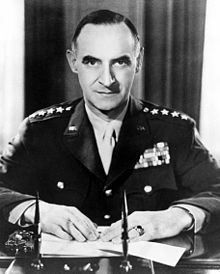
Clay orchestrated the Berlin Airlift (1948–1949) when the USSR blockaded West Berlin.
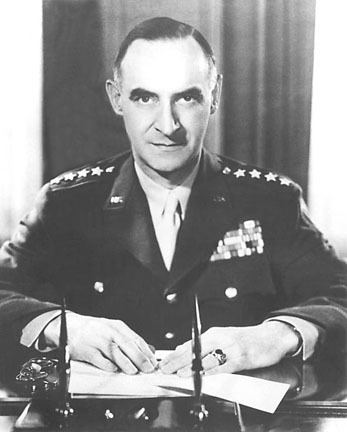
Lucius D Clay: The General Who Saved a City by Miguel Rust
Early life
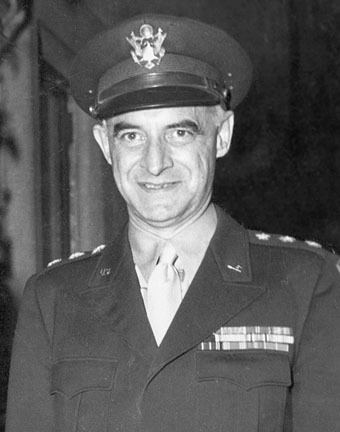
Clay was born in 1898 in Marietta, Georgia, the sixth and last child of Alexander Stephens Clay, who served in the U.S. Senate from 1897 to 1910. Lucius Clay graduated from West Point in 1918 and held various civil and military engineering posts during the 1920s and 1930s, including teaching at West Point, directing the construction of dams and civilian airports, and by 1942 rising to the position of the youngest brigadier general in the Army. All the while he acquired a reputation for bringing order and operational efficiency out of chaos, and for being an exceptionally hard and disciplined worker, going long hours and refusing to even stop to eat during his workdays.
World War II
Clay did not see actual combat but was awarded the Legion of Merit in 1942, the Distinguished Service Medal in 1944, and received the Bronze Star for his action in stabilizing the French harbor of Cherbourg, critical to the flow of war materiel. In 1945 he served as deputy to General Dwight D. Eisenhower. The following year, he was made Deputy Governor of Germany during the Allied Military Government.
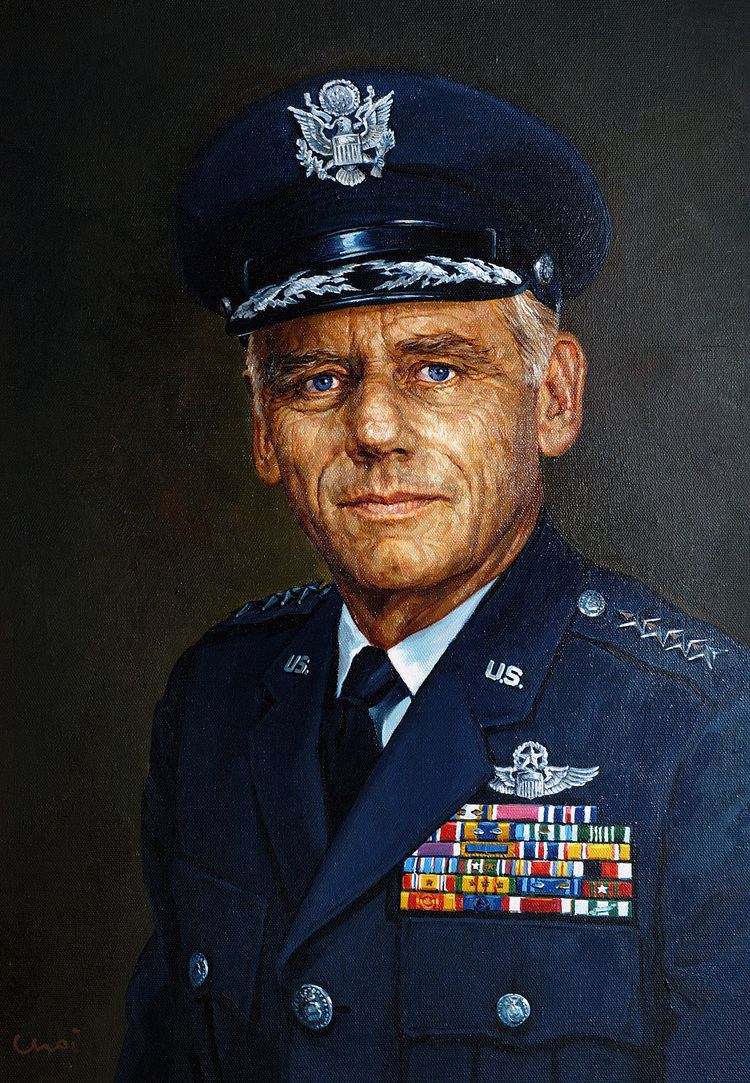
He would later remark regarding the occupation directive guiding his and General Eisenhower's actions, "there was no doubt that JCS 1067 contemplated the Carthaginian peace which dominated our operations in Germany during the early months of occupation."
OMGUS and Cold War
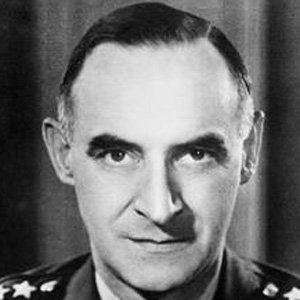
Clay heavily influenced United States Secretary of State James F. Byrnes' September 1946 speech in Stuttgart, Germany. The speech, "Restatement of Policy on Germany", marked the formal transition in American occupation policy away from the Morgenthau Plan of economic dismantlement to one of economic reconstruction. Clay was promoted to lieutenant general on 17 April 1945 and to general on 17 March 1947.
On March 15, 1947, Clay succeeded Eisenhower as military governor (or "high commissioner") of occupied Germany—the head of the OMGUS, the "Office of Military Government, United States". Clay's responsibilities covered a wide spectrum of social issues related to Germany's recovery from the war in addition to strictly military issues. He commissioned Lewis H. Brown to research and write "A Report on Germany," which served as a detailed recommendation for the reconstruction of post-war Germany, and served as a basis for the Marshall Plan. Clay promoted democratic federalism in Germany and resisted US politicians who sought to undo a conservative constitution adopted in Bavaria. He also closed the borders of the American Zone in 1947 to stem the tide of Jewish refugees who were generating tension with the local populations.
Treatment of Nazis during governorship
Clay was responsible for the controversial commuting of some death sentences; for example, convicted Nazi war criminals Erwin Metz and his superior, Hauptmann Ludwig Merz, to only five years imprisonment (time served). Metz and Merz were commanders of the infamous Bergba, Thuringia slave labor camp in which 350 U.S. soldiers were beaten, tortured, starved, and forced to work for the German government during World War II. The soldiers were singled out for looking or sounding Jewish. At least 70 U.S. soldiers died in the camp or on a later forced "death march", some by the hand of Metz himself. At the time West Germany was considered strategically vital in the Cold War developing between the West and Eastern Bloc nations. Releasing the offenders early had the intended effect of boosting German public opinion towards the United States.
He also reduced the sentence of Ilse Koch, the "Beast of Buchenwald", who had been convicted of murder at Nuremberg and who had infamously (and perhaps inaccurately) been accused of having gloves and lampshades made from prisoners' skin. The reductions in sentences were based on the hasty convictions of some Buchenwald personnel following the end of the war; evidence was sometimes questionable and many witnesses claimed to have been beaten by Allied interrogators. Clay confirmed several death sentences as valid, commuted several and had some, including Ilse Koch, released after serving a reduced sentence due to questionable evidence. Under the pressure of public opinion Koch was re-arrested in 1949 and tried before a West German court and on 15 January 1951 was sentenced to life imprisonment.
Berlin airlift
On June 26, 1948, two days after the Soviets imposed the Berlin Blockade, Clay gave the order for the Berlin Airlift (only afterwards receiving authorization from President Truman). This was an act of defiance against the Soviets, an incredible feat of logistics (at one point cargo planes landed at Tempelhof every four minutes, 24 hours a day), a defining moment of the Cold War, and a demonstration of American support for the citizens of Berlin.
Clay is remembered for ordering and maintaining the airlift, which would ultimately last 324 days, ending on September 30, 1949. He resigned his post days after the blockade was lifted on May 12, 1949.
On May 15, 1949, Clay left Germany and was replaced by John McCloy as civilian high commissioner for Germany. In the same year he was elected as an honorary member of the North Carolina Society of the Cincinnati. In 1950 he became chairman of the Continental Can Company for 12 consecutive years. He retired from Continental Can in 1962 to become a Senior Partner in Lehman Brothers investment banking house until his retirement in 1973.
Cultural cold war
During this time he hired American intellectual and former U.S. Army combat historian Melvin J. Lasky. Lasky and Clay developed the concept of a "cultural cold war", through which the USSR would be combated on a psychological and intellectual level. Clay was instrumental in creating, funding, and promoting Der Monat, a journal intended to support US foreign policy and win over German intellectuals. Copies of Der Monat were delivered along with supplies during the airlift.
Clay also studied television propaganda and suggested that in Europe "you get this constant repeated propaganda without advertising and without break", but in the United States "the advertising gives you a direct feeling of assurance that you haven't got propaganda in the program being thrown at you."
Eisenhower Administration and Crusade for Freedom
After OMGUS ended, Clay served the United States in other capacities. He had previous experience in 1933 with managing and organizing projects under the New Deal, and later became one of Dwight Eisenhower's closest advisers, assisting him in securing the 1952 Republican nomination and helping him select members of his cabinet upon ascension to the Presidency. When Eisenhower was in office, Clay served as his unofficial emissary in Europe. One of his first duties as President Eisenhower's emissary, and as the national chairman of the Crusade for Freedom, was to dedicate the city of Berlin's Liberty Bell. In 1954, he was called upon by President Eisenhower to help forge a plan for financing the proposed Interstate highway system. During the Berlin Wall crisis in 1961, President John F. Kennedy asked him to be an adviser and to go to Berlin and report on the situation. Two years later Clay accompanied Kennedy on his trip to Berlin. During his famous Ich bin ein Berliner-speech Kennedy said: "I am proud (...) to come here in the company of my fellow American, General Clay, who has been in this city during its great moments of crisis and will come again if ever needed."
Foundations, Corporations, Committees 1950-1978
The George C. Marshall Foundation which oversees Clay's correspondences with corporations, foundations and committees assembled an alphabetical list that gives a very good overview of his broad range of activities in those fields. General Clay served all of the following institutions in some capacity - as an associate, board member, or in a similar position.
Honors and decorations
Clay was given a ticker-tape parade, among many other honors, upon his return to the United States on May 19, 1949. He appeared on the cover of Time magazine three times. Clay also received an honorary doctorate of the Freie Universität Berlin and became an honorary citizen of Berlin (West) in 1953. One of the longest streets in West Berlin was named Clayallee in his honor, as was the Clay Headquarters Compound, which was located on the street. It held the headquarters of the Berlin Brigade, U.S. Army Berlin (USAB), and the U.S. Mission in Berlin. Marietta, Georgia named one of its major streets Clay Road, and South Cobb High School's football stadium is named "Clay Stadium" in honor of his work in creating what is now Dobbins Air Force Base there. While now called South Cobb Drive (State Route 280), it still carries memorial signs at each end dedicating the highway to him. In 1978 a new U.S. Army base in Northern Germany near the city of Bremen was named for Clay and until the end of the Cold War housed a forward-stationed brigade of the 2nd Armored Division, the 3rd Brigade, 2nd Armored Division, which had been based at Fort Hood, TX with the rest of the 2AD. This unit was redesignated as the 2nd Armored Division (Forward). 2AD(FWD) saw action in the Gulf War of 1991 before being disbanded as part of the post-Cold War drawdown of the U.S. Army. Since October 1, 1993 these barracks are used by the Bundeswehr but are still named after Clay. The "General-Clay-March" by Heinz Mertins, was written in his honor. Wiesbaden Army Airfield, near Frankfurt, Germany, was renamed "Lucius D. Clay Kaserne" in honor of GEN Clay on 14 June 2012. Wiesbaden Army Airfield was used extensively in "Operation Vittles," aka the Berlin Airlift. The name "Lucius Clay" features in the song "The Legend of Wooley Swamp" by the Charlie Daniels Band. Clay had just died around the time the song was written. Clay lies buried in West Point Cemetery, between the graves of Apollo I astronaut Edward H. White and Panama Canal chief engineer George W. Goethals. At Clay's grave site is a stone plate from the citizens of Berlin that says: "Wir danken dem Bewahrer unserer Freiheit" (We thank the Preserver of our Freedom).
General Clay´s decorations include: Distinguished Service Medal with Two Oak Leaf Clusters, Legion of Merit, Bronze Star Medal, World War I Victory Medal, Army of Occupation of Germany Medal, American Defense Service Medal, American Campaign Medal, European-African-Middle Eastern Campaign Medal, World War II Victory Medal, Army of Occupation Medal, Order of Kutuzov, Order of the British Empire, Military Order of the White Lion, Officer of the Military William Order, Commander of the Legion of Honour and Bundesverdienstkreuz (Grand Cross).
Family
Clay was the father of two sons, both of whom became Generals. Clay's son, General Lucius D. Clay, Jr., held the positions of commander-in-chief of the North American Air Defense Command, the Continental Air Defense Command, and the United States element of NORAD, and was also a commander of the U.S. Air Force Aerospace Defense Command. Clay's other son, Major General Frank Butner Clay, served in conflicts from World War II through the Vietnam War, and was an adviser to the US delegation at the Paris peace talks which ended US involvement in the Vietnam War.
